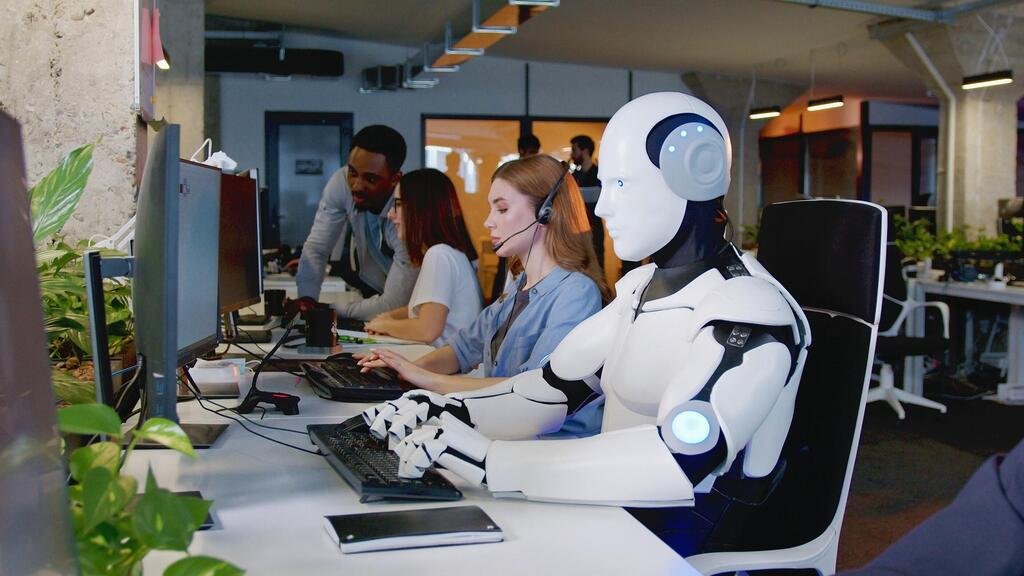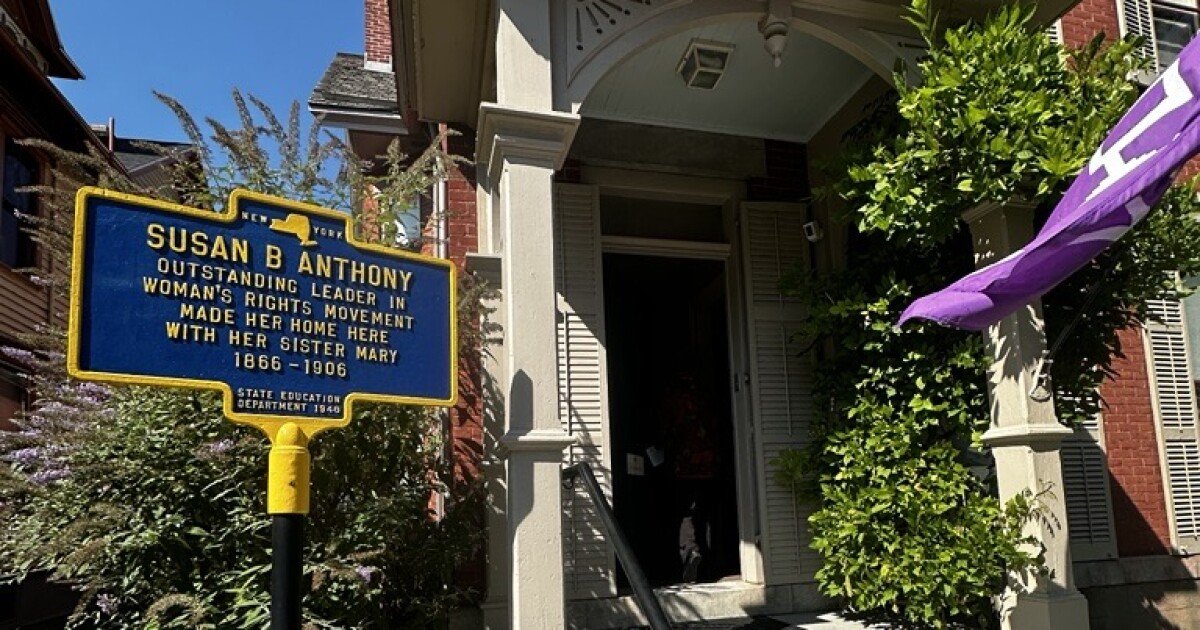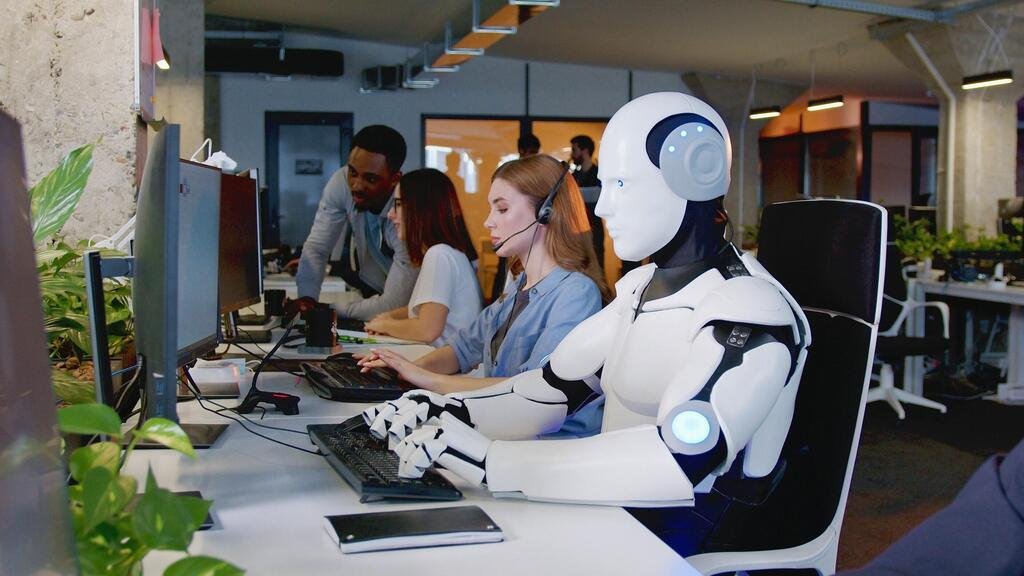AI Insights
These are the jobs AI may soon replace

Historically, technology has always shaped—and disrupted—labor markets. Steam engines and computers pushed entire professions into extinction, from telegraph operators to elevator attendants. Now, generative AI is stepping up as the next “general-purpose technology,” with nearly 40% of Americans already using AI tools at home or at work. That adoption rate outpaces both the PC and the internet in their early days.
Instead of speculation, Microsoft’s research focuses on what AI is currently doing. The data collected over nine months in 2024 from users in the U.S. highlights how AI is already performing tasks across a wide range of professions.
Among the most common tasks users sought help with were information gathering and writing. Think office assistant, but digital and highly scalable. But there’s more to it: the study emphasizes the distinction between the user’s goal and the AI’s action. For instance, a user trying to print a document has the goal of “operating office equipment,” while the AI’s action is to “instruct use of equipment.” This subtle difference helps identify whether AI is completing the task or just guiding the user.
To quantify AI’s impact, Microsoft developed an “AI applicability score” for each profession, combining usage frequency, task success and potential influence. It used the O*NET database, which breaks jobs into hierarchical work activities.
So who’s most at risk?
Jobs involving knowledge work—such as IT, mathematics and office support—show the highest AI applicability. Surprisingly, sales roles also rank high due to the focus on communication and information delivery. But topping the list, by a wide margin, was translation: 98% of a translator’s tasks overlap with common Copilot queries. Other vulnerable professions include historians, writers, CNC programmers, brokerage clerks, political scientists, journalists, mathematicians, proofreaders, and editors.
Conversely, roles requiring physical human interaction, such as nursing assistants and massage therapists, or manual labor (like dishwashers, construction workers and truck drivers) are far less affected, at least for now.
Will AI replace workers—or empower them?
The age-old question remains: will AI eliminate jobs or enhance them? Microsoft’s study doesn’t take a definitive stance. “The data focuses on usage, not outcomes,” researchers caution.
Looking back at ATMs, for example, they replaced one core bank teller task but led to a rise in teller jobs overall by freeing up staff to do higher-value work. Likewise, the study suggests AI is acting more as a service—a tool for training, consulting, or simplifying information—rather than outright replacing humans.
Information gathering and writing not only rank as the most common AI uses, but also receive the most positive user feedback. Yet despite AI’s effectiveness, the report notes limitations: an AI-written novel might struggle to emotionally engage readers, lacking lived human experience.
Interestingly, the study found a weak correlation between AI applicability and salary—meaning high-paying jobs aren’t necessarily more exposed. However, jobs that require a bachelor’s degree tend to score higher on the AI applicability scale than those requiring less education.
Could AI usher in the proletariat revolution Karl Marx imagined? It’s too early to say, but Microsoft’s data does hint at major workforce changes.
A rare glimpse into a historic shift
While the research is limited to one AI platform and a specific dataset, it offers a rare real-time snapshot of labor market transformation. What was once science fiction is now laid out in charts and graphs.
Although the data focuses on the U.S., the trends are expected to affect most developed and developing countries—especially in the absence of global AI regulation. Even Microsoft has laid off thousands this year, citing AI as a reason for reshaping internal workflows.
At the safer end of the spectrum, the study lists 40 professions less likely to be affected—mostly those involving physical tasks, fine motor skills, or complex human judgment. Think physical therapists, construction workers, farmers, engineers and surgeons. However, as robotics continues to evolve, even these roles may face disruption down the line.
In the end, the biggest concern is that AI could deepen inequality and fuel political instability, prompting populist shifts. On the flip side, the technology also holds tremendous promise—such as speeding up cures for diseases like cancer by analyzing data far faster than human researchers.
History shows that every industrial revolution has caused upheaval, but also expanded opportunities, industries and life expectancy. The big question remains: will AI create enough new jobs to replace the ones it’s displacing—or are we heading toward a world where work itself becomes obsolete?
AI Insights
Companies Rehire Human Workers to Fix Artificial Intelligence Generated Content After Mass Layoffs

| IN A NUTSHELL |
|
The integration of artificial intelligence (AI) into workplaces has become a prevalent trend, often at the expense of human employees. This shift, while aiming to optimize efficiency and cut costs, has exposed the limitations of relying solely on AI. As companies increasingly replace human roles with AI, they encounter unforeseen challenges that highlight the irreplaceable value of human expertise. The journey reveals the complex dynamics between technology adoption and workforce sustainability, raising important questions about the future of work and the role of AI in it.
AI’s Shortcomings Lead to Reemployment
While AI promises to revolutionize industries by automating tasks, its execution often falls short, leading companies to reconsider their human workforce. AI-generated outputs frequently lack the nuance and precision that human creativity and expertise bring. For instance, textual content may appear repetitive, designs might lack clarity, and AI-generated code could result in unstable applications. These deficiencies compel businesses to turn back to the very employees they had previously let go.
Lisa Carstens, an independent illustrator and designer, experienced firsthand the limitations of AI. Based in Spain, Carstens found herself rehired to fix AI-generated visuals that were, at best, superficially appealing and, at worst, unusable. She noted that many companies assumed AI could operate without human intervention, only to realize the opposite.
“There are people who understand AI’s imperfections and those who become frustrated when it doesn’t perform as expected,” Carstens explains, highlighting the delicate balance freelancers must maintain when rectifying AI’s mistakes.
The Emergence of a New Freelance Economy
AI has inadvertently given rise to a new type of freelance work focused on improving AI-generated content. Developers like Harsh Kumar, based in India, have seen a resurgence in demand for their skills as AI’s limitations become apparent. Clients who invested heavily in AI coding tools often found the results to be unsatisfactory, leading them to seek human expertise to salvage projects.
Kumar echoes the sentiment that AI can enhance productivity but cannot entirely replace human input. “Humans will remain essential for long-term projects,” he asserts, emphasizing that AI, created by humans, still requires human oversight. While work is plentiful, the nature of assignments has evolved, with a focus on refining and iterating upon AI’s initial attempts at content creation.
The Challenges of Human-AI Collaboration
The dynamic between AI and human workers is not without its challenges. While companies that over-relied on AI often seek to rehire their former employees, they also attempt to reduce compensation for these roles. The justification is that the work now involves refining existing AI-generated content rather than creating it from scratch.
This shift highlights a more integrated human-machine collaboration where both entities contribute uniquely to the final product. However, it also raises questions about fair compensation and the value of human expertise in a world increasingly influenced by AI. As companies attempt to balance cost-cutting with quality assurance, the debate over appropriate remuneration for freelance revisions of AI work continues.
AI in the Workplace: A Double-Edged Sword
While AI offers numerous advantages, such as increased efficiency and cost savings, it also presents significant challenges. Businesses must navigate the delicate balance between adopting AI technologies and maintaining a skilled human workforce. The experiences of freelancers like Carstens and Kumar underline the necessity of human oversight in ensuring AI-generated content meets industry standards.
As AI continues to evolve, companies must critically assess its role in their operations. The initial allure of AI-driven cost reductions must be weighed against the potential for subpar results and the subsequent need for human intervention. This ongoing evaluation highlights the importance of strategic planning in technology adoption, ensuring that businesses maximize AI’s benefits without compromising quality.
As AI becomes further entrenched in workplaces, companies must decide how best to leverage technology while valuing human contributions. The need for skilled professionals to enhance AI outputs underscores the irreplaceable nature of human expertise. Will businesses find a sustainable model that harmonizes technological advancements with human creativity and skill, or will the pendulum swing back toward a more human-centric approach?
This article is based on verified sources and supported by editorial technologies.
Did you like it? 4.5/5 (24)
AI Insights
Susan B. Anthony House to offer artificial intelligence ASL interpreting for guests

The story is known to many.
“News hit, you know?” Hughes begins, recounting the history recited by many a docent over the years. “The 15 women in Rochester who had voted in the election in November of 1872 were all indicted. They had gathered together here, at this house, on that morning, election morning, and they’d walked out West Main Street.”
But while the National Susan B. Anthony Museum and House is something of a Mecca for some visitors, and a regular field trip for area school children, all this time, a segment of the population has been left out. Rochester is home to one of — if not the —largest deaf populations per capita in the world.
That is why the museum is turning to Sign-Speak, an emerging, locally developed artificial intelligence platform providing on-demand speech to sign, sign to text and speech to text interpretation.
Scanning a QR code with their phones to access the platform, deaf visitors soon will be able to take in Hughes’ words: “They had registered before using the 14th Amendment, which said everyone who is born in this country is a citizen. And the women were turning that around to say, ‘therefore, women are citizens,’ and demanding a right of citizenship,” she concludes, “which is voting.”
Adopting the new technology will help make the museum more accessible. But it also fits with the National Susan B. Anthony Museum and House’s mission to open up conversations, Hughes said, and move those conversations forward from 1872 to present day. Ideally, with as many perspectives as possible. And this is a particularly important time to do so, she added.
Part of the National Susan B. Anthony Museum and House’s mission is to open up conversations, Hughes said, and move those conversations forward from 1872 to present day. Ideally, with as many perspectives as possible — which is where a new partnership with Sign-Speak enters the room.
“We’re in a cycle now where the same questions have come back at us again (from Anthony’s time) about humanity, about people within the borders of the United States: What civil rights do they have? Who gets to participate in systems of justice? Does the government have freedom to limit your civil rights or your actions?” Hughes said. “What’s fair and what’s just, and how do we determine that?”
Sign-Speak, an emerging artificial intelligence platform based in Rochester that provides on-demand American Sign Language interpretation, may expand that opportunity to more visitors who are deaf and hard of hearing.
Nikolas Kelly, the deaf owner and chief product officer of Sign-Speak, said the partnership marks the first collaboration with a museum, and it’s just one of many possible uses for the tool.
“We do have voice recognition and closed captioning, but we also have sign language recognition, where you can sign into it to reply back, and then we also have an avatar, and that’s sort of like a signing person,” Kelly said. “And lastly, we do also have VRI, video remote interpreting, and that’s if a deaf person feels like they need a human for whatever situation to interpret for them.”
Kelly said he got the idea to create the digital tool when he was a student at the National Technical Institute for the Deaf at Rochester Institute of Technology.
“I had noticed at that time that voice recognition technology had propagated, become ubiquitous, but no sign language technology existed that allowed me to express myself in my preferred language of sign language, at any time, to communicate with hearing people,” he said.
The vision is to expand accessibility and independence, particularly when last-minute interpretation is needed and not available. Along the way, and throughout development so far, he said the Deaf community has been involved.
“Anywhere where AI is used, for example, for application development for disabled communities, I think that it’s important to emphasize inclusion of members of that community, of that disabled community, in the development process,” Kelly said.
Museum staff are scheduled to be trained on Sign-Speak next Wednesday, with the roll out of the platform for the museum taking place shortly after.
Below is a transcript of a radio broadcasted story:
HOST: “A local museum and start up are partnering to provide on-demand artificial intelligence American Sign Language interpretation for visitors. From WXXI’s Inclusion Desk, reporter Noelle Evans caught up with a leader at the company Sign-Speak about it.”
NIKOLAS KELLY: “There’s some situations where you can’t get an interpreter right away. So as deaf people, we’re often stuck.”
NOELLE EVANS: “That’s Niko Kelly speaking through an interpreter. He is the Chief Product Officer at Sign-Speak in Rochester. The company is teaming up with the National Susan B Anthony Museum and House to provide on-demand interpretation using an AI platform he and his team have been developing.”
KELLY: “We do have voice recognition and closed captioning, but we also have sign language recognition, where you can sign into it to reply back, and then we also have an avatar, and that’s sort of like a signing person. … And lastly, we do also have VRI, video remote interpreting, and that’s if a deaf person feels like they need a human for whatever situation to interpret for them.”
EVANS: “Kelly says he got the idea when he was a student at the National Technical Institute for the Deaf.”
KELLY: “I had noticed at that time that voice recognition technology had propagated, become ubiquitous, but no sign language technology existed that allowed me to express myself in my preferred language of sign language, at any time, to communicate with hearing people.”
EVANS: “He says this tool is a way to bridge that gap. The Susan B Anthony House is expected to roll out Sign-Speak for guests in the coming weeks. Noelle Evans, WXXI News.”
AI Insights
Teams That Prioritize Either Learning or Performance Perform Better

In today’s fast-moving work environment, organizations expect teams to do everything at once: perform flawlessly in the moment and constantly improve for the future. But is it wise to ask teams to chase both performance and learning outcomes at the same time?
-

 Business2 weeks ago
Business2 weeks agoThe Guardian view on Trump and the Fed: independence is no substitute for accountability | Editorial
-
Tools & Platforms1 month ago
Building Trust in Military AI Starts with Opening the Black Box – War on the Rocks
-

 Ethics & Policy2 months ago
Ethics & Policy2 months agoSDAIA Supports Saudi Arabia’s Leadership in Shaping Global AI Ethics, Policy, and Research – وكالة الأنباء السعودية
-

 Events & Conferences4 months ago
Events & Conferences4 months agoJourney to 1000 models: Scaling Instagram’s recommendation system
-

 Jobs & Careers2 months ago
Jobs & Careers2 months agoMumbai-based Perplexity Alternative Has 60k+ Users Without Funding
-

 Podcasts & Talks2 months ago
Podcasts & Talks2 months agoHappy 4th of July! 🎆 Made with Veo 3 in Gemini
-

 Education2 months ago
Education2 months agoMacron says UK and France have duty to tackle illegal migration ‘with humanity, solidarity and firmness’ – UK politics live | Politics
-

 Education2 months ago
Education2 months agoVEX Robotics launches AI-powered classroom robotics system
-

 Funding & Business2 months ago
Funding & Business2 months agoKayak and Expedia race to build AI travel agents that turn social posts into itineraries
-

 Podcasts & Talks2 months ago
Podcasts & Talks2 months agoOpenAI 🤝 @teamganassi




